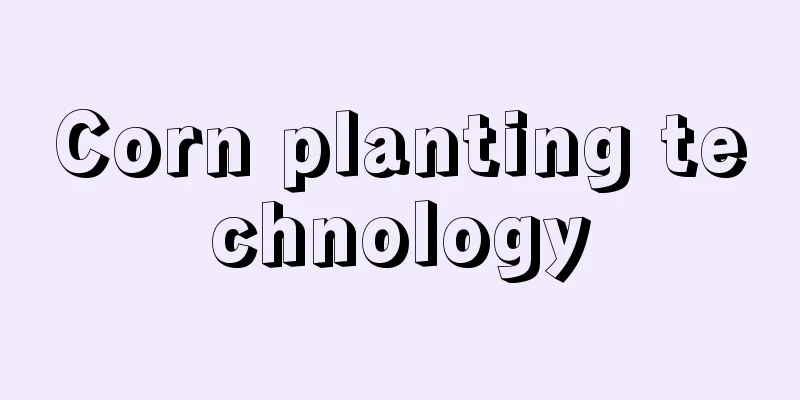Corn planting technology

|
As one of the important food crops in the world, the efficient cultivation of corn is of great significance to ensuring food security and increasing farmers' income. It is a thermophilic crop with high temperature requirements. Let's take a look at corn planting techniques . 1. Seed selection Selecting corn varieties suitable for local climate and soil conditions is the basis for efficient cultivation. When selecting seeds, factors such as corn's disease resistance, stress resistance, yield and quality should be considered. You can consult your local agricultural department or professional seed dealer to choose certified high-quality varieties. 2. Soil Preparation Corn has a well-developed root system and requires deep, fertile, well-drained soil. Before planting, the soil should be deeply tilled to improve soil structure and increase soil aeration and water retention. Appropriate application of organic fertilizer or compound fertilizer can provide sufficient nutrients for corn growth. 3. Reasonable density planting Reasonable close planting can make full use of land resources and increase corn yields . Determine the appropriate planting density based on variety characteristics and soil fertility. Generally speaking, the planting density of compact varieties can be appropriately increased, while the planting density of flat varieties should be appropriately reduced. 4. Irrigation and fertilization Corn requires adequate water and nutrients during its growth period. Arrange irrigation reasonably according to soil moisture conditions and weather conditions. In terms of fertilization, nitrogen, phosphorus, potassium and other nutrients should be reasonably matched according to the needs of the corn growth stage to avoid waste and environmental pollution caused by excessive fertilization. 5. Pest and disease control Pests and diseases are important factors affecting corn yield and quality. During the cultivation process, we must pay close attention to the occurrence of diseases and pests, and take comprehensive prevention and control measures in a timely manner. The occurrence of diseases and pests can be effectively controlled by combining disease- and pest-resistant varieties, rational crop rotation, physical control, biological control, and chemical control. 6. Harvest at the right time Timely harvesting can ensure corn yield and quality. Generally speaking, the best harvesting period for corn is from the late milky stage to the early waxy stage. When harvesting, appropriate harvesting machinery should be selected to avoid damage to corn plants. That’s it |
<<: Lavender sowing time and method, how to collect lavender seeds
>>: How to plant lavender cuttings? How long does it take for lavender cuttings to take root?
Recommend
Farming techniques and density of dace
The dace, also known as the native dace, dace, sn...
Phalaenopsis propagation methods and cultivation techniques
Phalaenopsis is an elegant and beautiful flower w...
Are succulents suitable for indoor cultivation?
1. Is it suitable? Some varieties of succulents a...
When is the best time to transplant cedar?
For larger cedars, changing the planting area wil...
How to prune figs?
Fig pruning time Figs need to be pruned three tim...
Can you water asparagus fern with beer?
1. Reasons Asparagus fern prefers neutral to slig...
How to cultivate sea cucumbers to achieve high yields?
Sea cucumber is one of the famous “Eight Delicaci...
What is the best month to plant grape hyacinth?
When to plant grape hyacinth Grape hyacinth is us...
What to do if the leaves of Margarite turn yellow
1. Improper watering 1. Reduce watering Although ...
Is it okay to put a lucky tree in the living room?
Is the lucky tree suitable for indoor cultivation...
The difference between Amaryllis and Amaryllis
1. Different varieties Although Amaryllis looks s...
What fertilizer is best for roses?
Fertilizing roses Roses like fertilizer and need ...
Cultivation methods and precautions of Philodendron
Philodendron is a plant belonging to the Araceae ...
What are the shade-tolerant plants that bloom all year round?
1. White Anthurium White calla lilies are relativ...
You can do cuttings, build a greenhouse, and grow flowers in a foam box. It saves you money and worry!
Foam box homemade flower pot Foam boxes are water...









